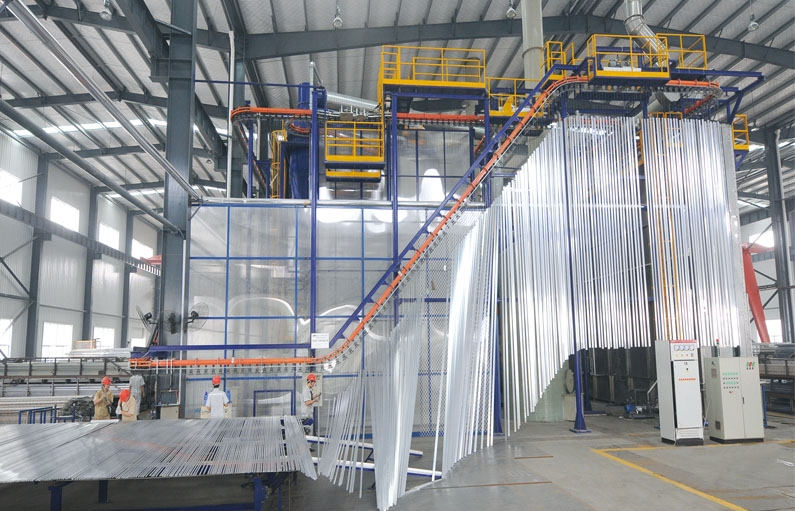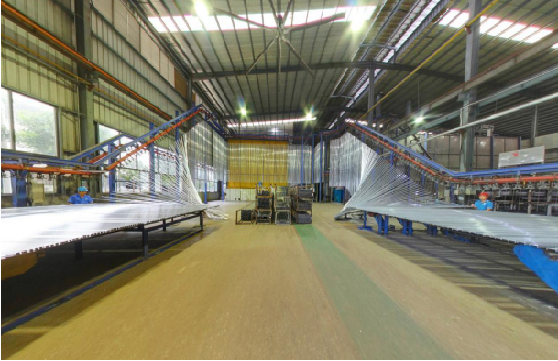Aluminum profiles are widely used in construction, transportation, and other industries due to their excellent performance in terms of strength, durability, and cost-effectiveness. To enhance the appearance and durability of aluminum profiles, various methods of surface treatment have been developed. This article will introduce four common surface treatment methods for aluminum profiles: spraying, oxidation, sandblasting, and electrophoresis.
Spraying
Spraying is a popular surface treatment method for aluminum profiles, involving the use of a spray gun to apply a layer of paint or powder coating to the surface of the profiles. The paint or powder coating can provide not only a decorative appearance but also protection against corrosion and wear. The quality of the coating depends on the type of paint or powder, the application technique, and the preparation of the surface.
Oxidation
Oxidation, also known as anodizing, is a chemical process in which a layer of aluminum oxide is formed on the surface of the profiles through electrolysis. The thickness and color of the oxide layer can be controlled by the duration and intensity of the process. The oxide layer can improve the corrosion resistance, wear resistance, and surface hardness of the profiles. The oxide layer can also be further sealed with organic or inorganic compounds to enhance the durability and appearance of the profiles.
Sandblasting
Sandblasting is a mechanical process that involves the use of abrasives to clean and roughen the surface of the profiles. Sandblasting can remove dirt, oxide films, and other impurities from the surface and create a matte or rough texture. Sandblasting can also enhance the adhesion of coatings and improve the light diffusion of the profiles. The type and size of the abrasives, the pressure and distance of the nozzle, and the duration of the process can affect the quality and consistency of the surface.
Electrophoresis
Electrophoresis, also known as electrocoating, is a method of applying paint or primer to aluminum profiles by using an electrical current to deposit the coating onto the surface. The process involves immersing the profiles in a bath of paint or primer and applying a voltage difference between the profiles and the electrodes in the bath. The coating can form a uniform and thin layer on the surface, with good adhesion, coverage, and corrosion resistance. Electrophoresis can also reduce the environmental impact of coating operations by minimizing the waste of paint and solvent.
Conclusion
In conclusion, the surface treatment of aluminum profiles can significantly affect their appearance, performance, and durability. The choice of the surface treatment method should consider the requirements of the application, such as the exposure to weather, chemicals, or mechanical stress. Different methods of surface treatment can complement each other to achieve the desired results. The surface treatment industry continues to innovate and advance to meet the evolving needs of customers and the environment.


Post time: May-09-2023





